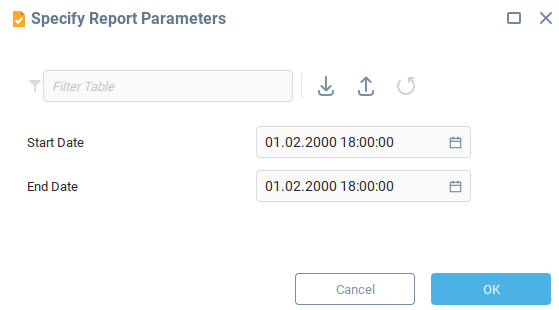Parameterized Reports
Report parameterization is useful when you want to let an operator configure a report at runtime. If the Parameterized flag is enabled in report properties, the user may be prompted to input one or more parameters when launching the report. An Edit Data UI Procedure is used to prompt for report parameters.
 | Parameterization is a complex subject, which is beyond the extent of this topic. However, to understand this section, you must have a complete understanding of the Parameterization process and engine. So, if you'd like to use Parameterized Reports and you're unfamiliar with the subject, you should now skip to Parameterization Engine, read the whole topic until you're fully familiar with parameterization, and then come back here. |
When the Parameterized option is enabled in the Report Properties, the report processing engine uses Parameterizer Source Data to build Source Data Expression in real-time based on a number of operator-specified parameters. For more information, see Parameterization Engine.
Here is an example of Parameterizer Source Data with two date fields in Format (startDate and endDate) and Parameterized Expression:
{attendance:timeRecorderEvData('{.:}',"<e>{startDate}</e>", "<e>{endDate}</e>")}A report containing this Parameterized Expression will ask for Start Date and End Date parameters upon activation:

The final Source Data Expression used to build a report will be something like:
{attendance:timeRecorderEvData('{.:}',"2009-05-01 00:00:00.000", "2009-05-02 00:00:00.000")}Was this page helpful?